The Making of the Christian Global Mission, Part 3: Setting a Better Example
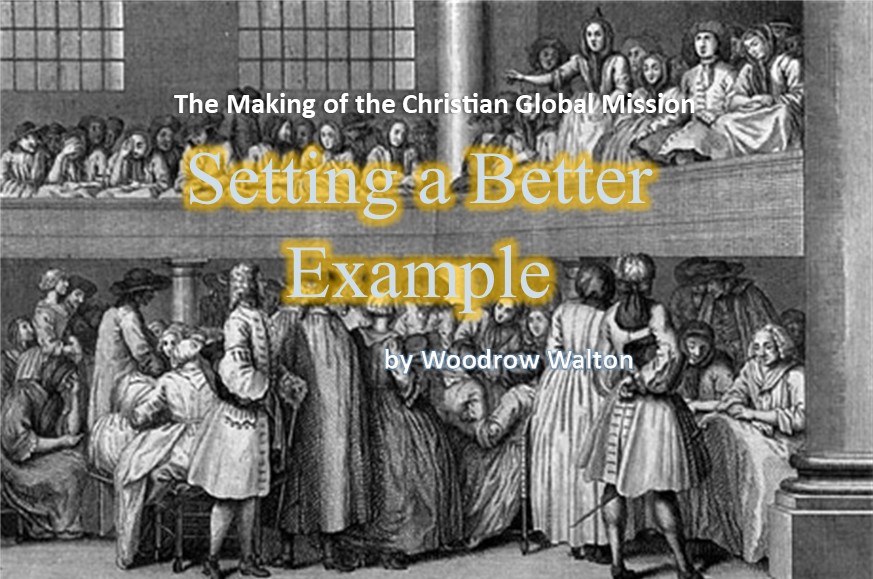
Christian historian Woodrow Walton continues his investigation into the origins of the modern movements that inspired Christians to go and share the mission and message of Jesus throughout the world. In Part 3, he invites us to learn more about the Quakers and other marginalized groups whose convictions had them following God on paths often disdained by other Christians.
In the 17th and 18th centuries, events were unfolding in England, Europe and North America that would change how the gospel message was being proclaimed. Although little was being done in the strict evangelical sense of proclaiming the message (kerygma), much was done in the area of the living out of the Christian message and in the complexion or appearance of the total church in Europe and especially in North America.
During this time, Southern Europe, especially along the Mediterranean coastline, remained dominantly Roman Catholic, from Portugal all the way to the Balkans and no further. The Balkans were strongly Orthodox within a growing Islamic presence. Slavic Europe, outside of the Austro-Hungarian Empire, was also Orthodox. Austria-Hungary and the Czech and Slovak areas remained Catholic but were quickly experiencing the effects of the Protestant Reformation and the Anabaptist Radical Reformation. The Hussite Brethren, better known as the Moravians, were leaving for western Europe and then continuing to go overseas. However, similar Brethren bodies, such as the Mennonites, the Amish, and the Hutterian Brethren, remained. These had a significant impact on the Christian complexion of Eastern Europe outside of Russia.
To see the unfolding of the worldwide Christian mission, let us look at England and Germany in particular. First, there are two Englishmen worthy of attention, George Fox and William Penn.
George Fox was born on July 1624 in Drayton-in-the-Clay, Leicester, England, and is credited with being the founder of the Society of Friends, now known as the Quakers. By the time that he turned 19 years of age, he was conscious of an “inner voice” which evangelicals and Pentecostals would identify as the leading of the Holy Spirit. Fox became an assiduous student of the Bible. He was the first person on record to argue for the equality of women with men in the propagation of the gospel. In 1647, Fox began preaching publicly. He preached in fields and markets. He attracted gatherings of people who flocked to listen to his messages. At times, they gathered in houses after the services. Originally, the new believers referred to themselves as “Children of the Light” or “Friends of the Truth” and later still “Friends,” a term which continued to be in use along with “Quaker.” Fox became a public figure, but not of his own making. Officials were suspicious of him because of the stands he took on military service, the place of women in home and in public, and how the incarcerated and children should be treated.
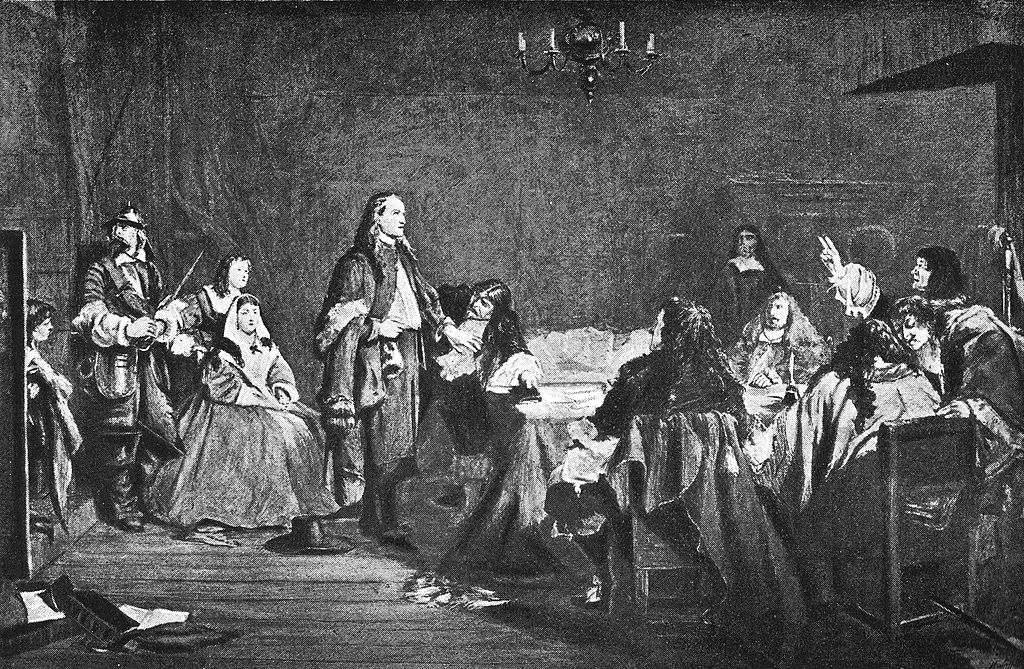
George Fox refusing to take the oath at Houlker Hall, 1663. From a painting by John Pettie (1839-1893).
Image: Wikimedia Commons
At the same time, he gained approval from people in prominent positions: James Naylor, a prominent preacher in London, became one of Fox’s first converts to the Quaker position. By the end of the 1650s, the Society of Friends became more organized. The British Commonwealth under Cromwell in the 1650s was also the Friends’ most creative period. Even though the restoration of the monarchy was threatening for the Friends, now characterized as Quakers, it became the era when believers migrated to North America and settled in Puritan New England. The revolt in 1661 by the Fifth Monarchists led to the suppression of the Quakers and the repression of other dissenters, instigating an exodus. It was in the aftermath of the Fifth Monarchist coup that Fox and eleven other leaders among the Friends issued a statement which became known as “the peace testimony” from which stems their stand against military conscription.
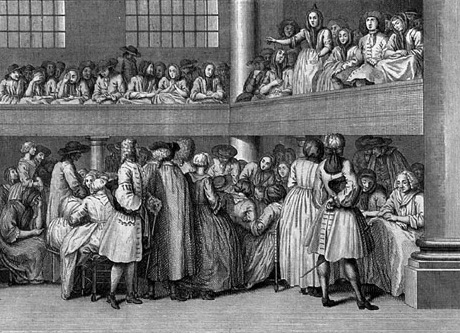
A woman preaches during a Quaker Meeting in London (circa 1723), engraving by Bernard Picard (1673-1733).
Image: Wikimedia Commons
Their stand against military conscription and for equality of rights between men and women in both civil matters and the ministry of the church. This did not sit well with many in either England or Puritan New England. When some of the New England Quakers came to London to plead their case, Fox met with them. After his release from prison in 1666 for refusing to swear the oath of allegiance to the existing political regime in England, Fox set about normalizing a system of monthly and quarterly meetings throughout Great Britain, extending to Ireland’s Quaker population, a system which has persisted to this day. In 1669, Fox married a widow with eight children, Margaret, at a Quaker meeting in Bristol. They shared together in the administration the Society of Friends. In 1671, George and Margaret Fox embarked on a voyage to the West Indies and North America where they visited groups of Quakers who had earlier left England for Barbados, Jamaica, Maryland, and North Carolina. After the travels abroad, the Foxes returned to England. It was there that George and Margaret met with William Penn and Robert Barclay, men of wealth and position who became allied with the Friends.
In 1683, Penn, who had been granted land in North America, turned 1,000 acres of land in the colony of Pennsylvania to Fox and the Quakers. Although Fox was never able to visit for himself the Quaker colony in Pennsylvania, he was overjoyed with what was granted. Penn, himself a Quaker, furthered the ministry within Pennsylvania. The Act of Toleration of 1689 put an end to the uniformity law under which the Friends and other dissenting Christians had been discriminated against and persecuted. It was a great day for Fox and the expanding Quaker movement, both within what would later become the United States of America, and in the Netherlands, Poland, Denmark and Germany. Fox died in January 13, 1691, soon after preaching at the Gracechurch Meeting House in London. He left a journal and letters and other writings which were subsequently published after his death. His name is immortalized at the prestigious George Fox University with campuses in Portland, Salem, Newberg, and Redmond, Oregon.
The Quaker emphasis on the leading of God’s Holy Spirit became apparent in how they lived, their total Christian witness.
Of equal importance was the Quaker emphasis on the leading of God’s Holy Spirit in a person’s life and, thereby, an increase of Christian witness. The spiritual health of the witness is as important as the sermon that is preached. Walt Whitman, who was raised by parents inspired by Quaker principles, wrote of George Fox: “George Fox stands for something too—a thought—the thought that wakes in silent hours—perhaps the deepest, most eternal thought latent in the human soul. This is the thought of God, merged in the thoughts of moral right and the immortality of identity” (Prose Works, Philadelphia, David McKay, 1892). Modern Christians have taken seriously the writings of Elton Trueblood, who for years taught at Earlham University in Indiana, on how Christians are yoke-fellows in Christ’s work of outreach and ministry. This writer has met Dr. Trueblood in person at a meeting in Fort Worth, Texas, around 1956, at the Texas Christian University.
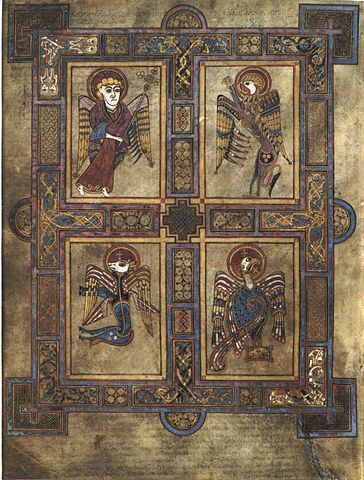
This article is part of The Gospel in History series by Woodrow Walton.
Image: The Books of Kells by way of Wikimedia Commons.
The work of Richard Foster, who inspired the Renovaré moment and the Renovaré Spiritual Formation Study Bible, is another example of Quaker influence. The Renovaré Study Bible is an inter-denominational venture that seeks to plumb the spiritual depths of the Scriptures using quotations of Christians from the past with the intent of deepening the devotional life of the believer and consequently improve the quality of Christian witness.
A side effect of Penn’s donation of land to the Quakers was to encourage the settlement of the same area by other dissident Christian groups, particularly those with pacifist leanings such as the Mennonites of the Netherlands and the Amish of Switzerland. The designated land was composed of what is now known as Lancaster County, which historians consider the birthplace of American agriculture. The new Mennonite and Amish immigrants were principally farmers and agriculturists. Their children would later migrate into the American Midwest, during James Monroe’s presidency in the early 1820s, taking their agricultural skills with them. These migrations saw the development of farmlands in Ohio, Indiana, Illinois, and Iowa. Cedar Rapids, Iowa, proudly displays a billboard advertising Quaker Oats as you enter the city. These families also displayed a quality of Christian life that enabled them to relate to the Native Americans of that section of our country. One of the earliest of these was the family of Daniel Boone. His earliest portrait identified him, by way of personal adornment and headwear, as a Quaker, a portrait that dispels the myth built around him by the Motion Picture industry and modern television frontier drama. Boone and his family of six children were able to balance the scales between the way of life of Native Americans and that of the immigrant settlers coming from the East.
What this did was to give a larger scope to the mission of the church beyond the preaching and purely evangelical to include the presentation of the Christian life lived out beyond that of preaching. The role of the church is not only that of the kerygma (proclamation) and the didactic (teaching) but the presentation of a kind of communal life which reaches outward beyond itself to reconcile, heal, extend mercy, befriend, encourage, and inspire.
The USA’s first foreign mission board was formed when churches were able to set aside their extreme congregationalism.
What would become the United States of America was not merely a haven for different Christian groups from England and Europe. For many colonial American Christian leaders, it was also a model of what was envisioned by Peter the apostle when he spoke at the festival of the Pentecost a short time after Jesus’ ascension and by John, years later, when, banished to the island of Patmos, he envisioned those who were redeemed “out of every tribe and tongue and people and nation” (Revelation 5:9-10). It is important to note that within that vision, the redeemed were not identified by their church polity, interpretive stance, racial or ethnic origin, but having come from every tribe, tongue, people and nation whether Slavic, Germanic, Scandinavian, African, Asian, or whatever. It would take another century for some incoming church groups to set aside prejudices and begin to co-operate in both evangelism and outreach and in some cases merge.
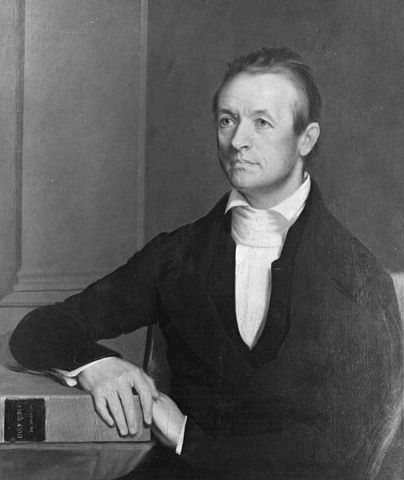
Adoniram Judson in 1846.
Image: Wikimedia Commons
In the young USA, only sixteen years old, a meeting occurred near the newly formed Williams College that sparked America’s initial entry into the Christian world mission. This event is referred to in American history as the Haystack Meeting in August of 1806. Several students of Williams College at Williamstown, Massachusetts, gathered for prayer in the shadow of a haystack close to the school. Among the students were Samuel Mills, James Richards, Adoniram Judson, Robert Robbins, Harvey Loomis, and Bryan Green. The news of Carey, his wife, and family departing from England to spread the gospel in India and translating the Scripture into the language spoken near Calcutta reached America and spread to Williams College. The news lit a fire in the hearts of the six young men. Of the six of them, Adoniram Judson decided to meet William Carey in India.
The Haystack Prayer Meeting of 1806 has been considered the beginning of America’s entry into the Christian world mission. It was, however, in 1810, that the American Board of Commissioners for Foreign Missions was formed by Baptist churches who set aside their extreme congregationalism to in order to have a General Convention the purpose of which was to enable and support Baptist missionaries around the world. It was under this Board that Adoniram Judson and his wife were able to make contact with William Carey in Calcutta and then go on to southeast Asia.
The Second Great Awakening was a sudden earnestness in Christian devotion and discipleship.
The evangelistic outburst in mid-America, often referred to as the Second Great Awakening, was not an altogether novel idea. It was a sudden earnestness in Christian devotion and discipleship. It made headway from the leadership of Timothy Dwight, president of Yale University, grandson of Jonathan Edwards. As it spread into the trans-Appalachian west, two of the leading figures were Thomas and Alexander Campbell in Pennsylvania, Barton Warren Stone, a New Light Presbyterian, in Kentucky, and Peter Cartwright, a Methodist Circuit Rider who once took evangelism into a dance hall. He later served in the United States Congress as a representative from Illinois.
PR
Category: Church History, Fall 2020


